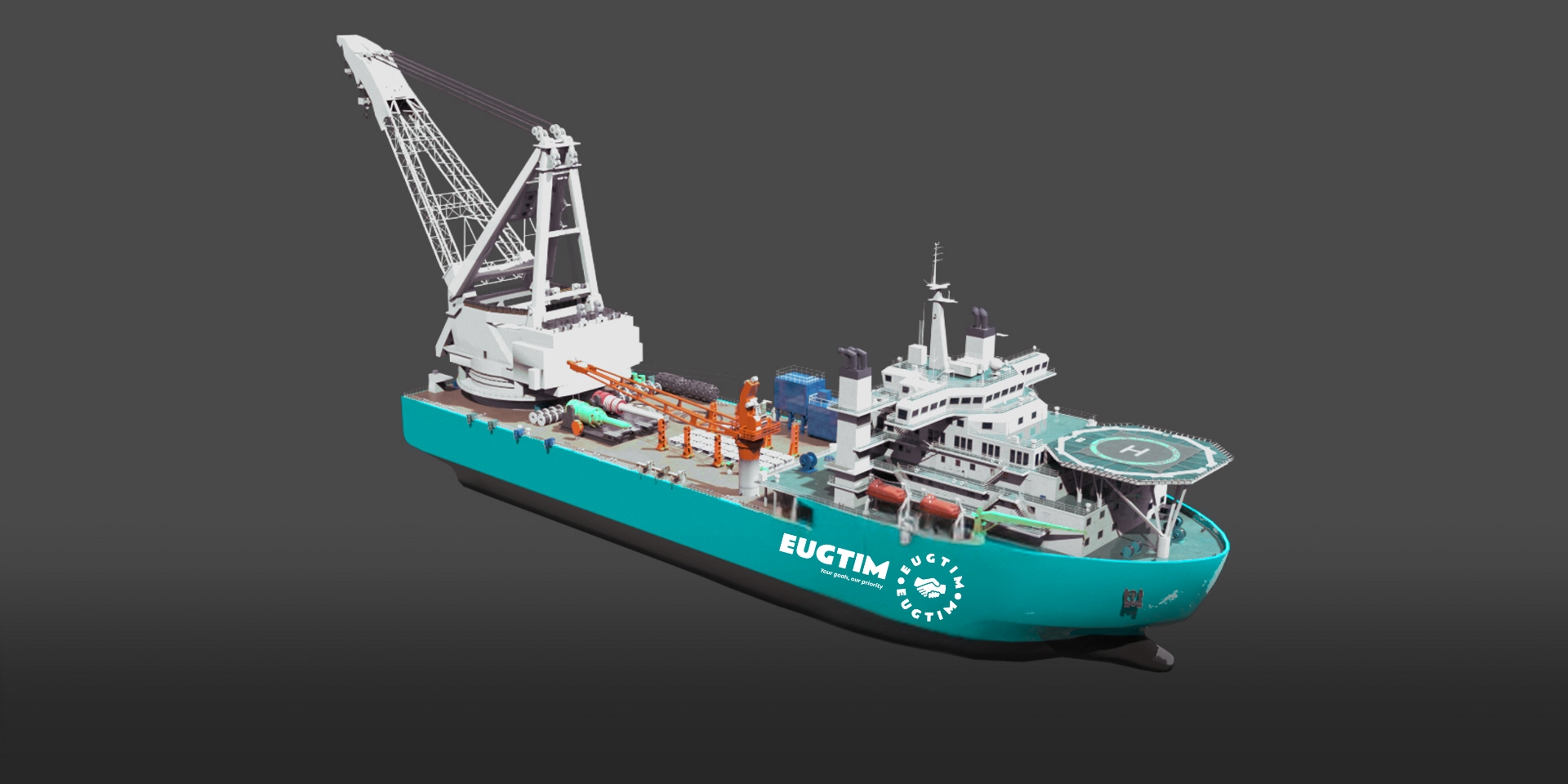
A HELICOPTER LANDING DECK (HELIPAD) FOR PERSONNEL AND SPARE PARTS TRANSFER.
COMPUTER-CONTROLLED SYSTEM TO AUTOMATICALLY MAINTAIN A VESSEL’S POSITION USING ITS OWN PROPELLERS AND THRUSTERS.
COMPUTER-CONTROLLED SYSTEM TO AUTOMATICALLY MAINTAIN A VESSEL’S POSITION USING ITS OWN PROPELLERS AND THRUSTERS.
DEPENDING ON THE TYPE OF FLOATING CRANE, THESE VESSELS CAN OFTEN ACCOMMODATE SEVERAL HUNDRED PEOPLE.
* THE VESSELS SHOWN HERE ARE EXEMPLARY MODELS ONLY.
Heavy lift crane vessels are ships mainly used to transport and install offshore structures like substations and foundations. Many of these vessels are built with multiple hulls to stay stable in the water, especially when using the crane. Instead of using weights like on land, they can flood their ballast tanks to help keep balance during lifting. Their decks are large and very strong to carry heavy and bulky parts. Most crane vessels have their own engines and systems to stay in the right position, often using dynamic positioning (DP). They come in different sizes and crane capacities, often able to lift over 15,000 tons, depending on the project needs.
Note: The picture shows an example model of a crane vessel, but real offshore crane ships are similar in design.